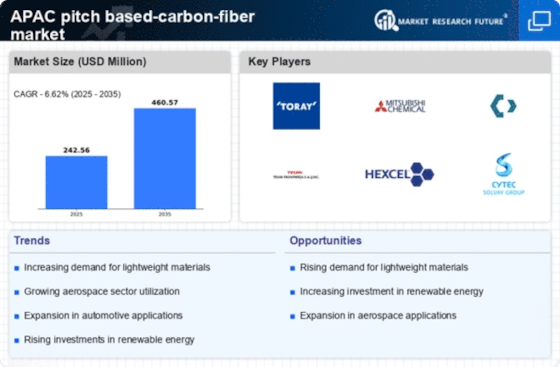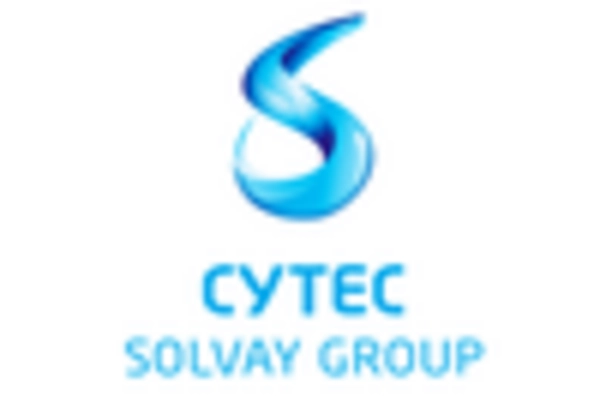Surge in Renewable Energy Projects
The push for renewable energy in APAC is creating a burgeoning demand for pitch based-carbon-fiber materials, particularly in wind turbine manufacturing. These materials offer superior strength-to-weight ratios, making them ideal for constructing larger and more efficient turbine blades. The pitch based-carbon-fiber market is expected to benefit from this trend, with projections indicating a potential market growth of 20% over the next five years. As countries in the region invest heavily in sustainable energy solutions, the need for advanced materials that enhance the performance and durability of renewable energy systems becomes increasingly critical. This trend not only supports environmental goals but also positions pitch based-carbon-fiber as a key player in the energy sector.
Rising Investment in Research and Development
Investment in research and development (R&D) within the pitch based-carbon-fiber market is on the rise in APAC, as companies strive to innovate and improve production processes. Enhanced R&D efforts are likely to lead to the development of new applications and improved material properties, which could significantly expand market opportunities. For instance, advancements in manufacturing techniques may reduce production costs, making pitch based-carbon-fiber more accessible to various industries. The market is anticipated to grow by approximately 12% annually, driven by these innovations. Furthermore, collaboration between academic institutions and industry players is fostering a conducive environment for breakthroughs, thereby enhancing the competitive landscape of the pitch based-carbon-fiber market.
Increasing Applications in Automotive Industry
The automotive sector in APAC is increasingly adopting pitch based-carbon-fiber materials due to their lightweight and high-strength properties. This shift is driven by the need for fuel efficiency and reduced emissions, as manufacturers aim to comply with stringent environmental regulations. The pitch based-carbon-fiber market is projected to witness a growth rate of approximately 15% annually, as automakers integrate these materials into vehicle designs. Additionally, the trend towards electric vehicles (EVs) further propels the demand for lightweight components, enhancing performance and range. As automotive manufacturers seek to innovate and differentiate their products, the incorporation of pitch based-carbon-fiber is likely to become a standard practice, thereby expanding the market's footprint in the region.
Expansion of Aerospace Manufacturing Facilities
The establishment of new aerospace manufacturing facilities in APAC is significantly impacting the pitch based-carbon-fiber market. As countries in the region invest in expanding their aerospace capabilities, the demand for advanced materials that meet rigorous safety and performance standards is increasing. Pitch based-carbon-fiber, known for its exceptional strength and lightweight characteristics, is becoming a material of choice for aircraft components. The market is expected to grow by approximately 18% as these facilities ramp up production and seek innovative solutions to enhance aircraft efficiency. This trend not only supports the aerospace sector's growth but also positions pitch based-carbon-fiber as a critical material in the future of aviation.
Growing Demand for Lightweight Materials in Sports Equipment
The sports equipment sector in APAC is increasingly leaning towards lightweight materials, with pitch based-carbon-fiber emerging as a preferred choice. This trend is largely influenced by athletes' demands for high-performance gear that enhances speed and agility. The pitch based-carbon-fiber market is projected to experience a growth rate of around 10% as manufacturers seek to capitalize on this demand. The material's unique properties allow for the production of durable yet lightweight equipment, such as bicycles, tennis rackets, and golf clubs. As consumer preferences shift towards high-quality, performance-oriented products, the integration of pitch based-carbon-fiber is likely to become more prevalent, thereby driving market expansion.


















Leave a Comment